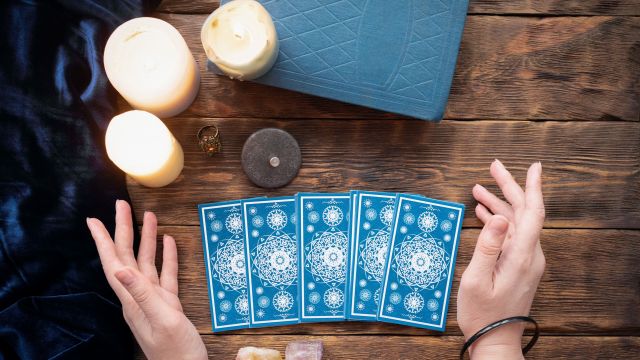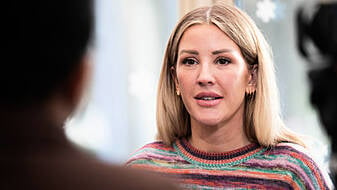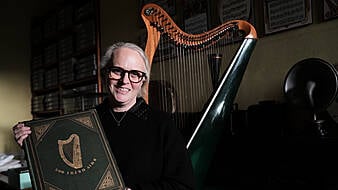You only have to look at the plethora of crystals on sale at high street shops like Urban Outfitters, the rise of new-age Instagram accounts with thousands of followers like @themoontarot and the popularity of tarot apps to know that its popularity is firmly on the up.
Faced with an uncertain economic future and the stresses of lockdown, it’s no wonder that many of us are looking for answers in ancient practices, finding both of a form of therapy and a source of practical advice in holistic wisdom.
I think many people are turning to spirituality and the esoteric because they have come to realise that consumerism is not the answer to happiness.
Fiongal Greenlaw is a tarot master, psychic and spiritual advisor who has read for hundreds of clients as well as running spiritual events for the likes of Harvey Nichols, through his company The Wellness Foundry.
He says tarot came into his life at a point of burnout. “Previously, I worked as a fashion designer for over eight years, heading up design houses in London and overseas. My health, both mental and physical, hit crisis point because of the pressure I was putting on myself.”
This stress reached its lowest ebb when Mr Greenlaw was hospitalised for five days. “My symptoms couldn’t be diagnosed by doctors, nor treated by conventional medicine.”
Desperate to get better, the spiritual guru says he began an alternative journey. Starting with acupuncture, then discovering Reiki and yoga, this led him to further spiritual exploration, landing finally on tarot.
“The relief I felt from these practices was so great, and the transformation was so complete for me, I was driven to share these modalities with others,” he says.
Mr Greenlaw believes that tarot is a source of comfort for millennials because it bring them a deeper sense of meaning. “Partly, I think many people are turning to spirituality and the esoteric because they have come to realise that consumerism is not the answer to happiness, but rather it’s understanding why we’re here and helping others.”
I’m drawn to the practice because I find it incredibly calming, especially when I need to get a little bit more perspective on my situation.
Advertisement
Emily Thornton (@solarsistertarot) is another spiritualist and tarot reader, based in Manchester, who says the majority of her clients are young women in their 20s and 30s. Having lost her mother at the tender age of 26, she experienced a spiritual awakening and was called to help others through the medium of tarot.
“I’m drawn to the practice because I find it incredibly calming, especially when I need to get a little bit more perspective on my situation,” she says.
“I think the millennial generation is looking for answers. It can be disappointing when we feel like we’re not achieving the expectations that were put upon us.”
She adds: “I think that a tarot reading can give young people reassurance, confidence and a fresh outlook to go into that job interview, go on that date or try a new skill with a feeling of empowerment and confidence. It’s like a little voice in your ear saying, ‘You can do this’.”
So what exactly is tarot and what does a reading involve? At its essence, the practice involves using illustrated cards to gain insight into the past, present or future by formulating a question, then drawing and interpreting cards.
Mr Greenlaw says one reason milennials are so drawn to the practice is because it’s very visual in its nature, much like popular social media apps like Instagram and TikTok.
“Tarot differs from other forms of decks as it has 78 cards, divided into the Major and Minor Arcana – ‘Arcana’ meaning secrets,” he explains.
“Each card depicts a different archetype or aspect of life and the soul’s journey. The reader will use the cards as a prompt or reference point to intuit information about the sitter.”
He describes tarot is a diagnostic tool, a bit like an X-ray, which reflects back to you your present circumstance, helping you to move forward by making positive changes.
“Another way I describe it is the Tarot is like a friend who tells you exactly how it is, they might be direct and assertive, but they always have your best interests at heart.”
A reading usually takes around 45 minutes with 10 to 15 minutes at the end for any questions or feedback.
“The first half is more of a ‘stream of conscious’ from the reader, giving you interpretations, guidance and messages around different areas of your life, be it work, finance, love, health,” Mr Greenlaw says.







